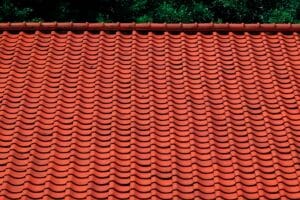Learn About Roofing
Looking to replace your roof? EcoWatch is your go-to source for eco-friendly home improvement projects, including roofing.
Get Free Quotes From Approved Roofing Installers
Top EcoWatch Resources for Sustainable Roofing
Why Is It Important to Replace Your Roof?
Living with an old roof can not only expose you to the elements, but it can also drastically reduce the energy efficiency of your home. If you wait too long to replace your roof, you may start to experience water damage, mold, pests and roof sagging. You’ll also be paying too much on your energy bills, as older roofs can allow the heating and cooling you’re paying for to escape. The best roofs for energy efficiency can reduce cooling demand by up to 15%, which can save you a lot of money and frustration in the long run.1
When Should You Replace Your Roof?
Here are the signs to look out for when determining if you need a new roof:
- Your energy bills are high
- Your roof’s warranty is set to expire soon
- You see signs of water damage like mold, rot, stains or peeling paint in places like your attic, walls or ceilings
- Your roof is sagging
- Some of your shingles are bucking, curling or missing
- A roofing contractor has inspected your roof and finds that it is beyond a simple repair
Once you know that you need a new roof, you’ll have to select the roofing material that is best for you. In general, the best roofs for increasing the energy efficiency of your home are light-colored, because darker roofs tend to absorb more heat. Clay and metal roofs are also great materials in terms of energy efficiency. For maximized benefit, Look for Energy Star-certified roofing materials that will reflect the sun’s rays and can lower roof surface temperature by up to 50 degrees Fahrenheit.2
More Energy-Efficient Home Upgrades
Top 5 Best Window Companies
Need new windows? See our top picks for energy-efficient options. We go through:
- Top window installers
- How to choose a window company in your area
- Which window installers we recommend
- The cost of windows
- Which window services you might need
- And more
Click below to see the full review.
Sustainable Home Improvements for 2023
We give ideas both big and small for making your home more sustainable this year. These include:
- Investing in energy-efficient appliances
- Starting a compost bin
- Using reclaimed materials when possible
- Installing efficient lighting
- And more
Click below to see all of our tips.
Editorial Contributors

Karsten Neumeister, EcoWatch Energy Editor
Karsten is an energy-efficiency specialist passionate about sustainable development. Before joining EcoWatch, Karsten worked in the energy sector of New Orleans, focusing on renewable energy policy and technology.

Kristina Zagame, EcoWatch Hone Writer
Kristina is a writer with expertise in solar, energy efficiency and related topics. Before joining EcoWatch, Kristina was a TV news reporter and producer, covering topics including West Coast wildfires and hurricane relief efforts.

Dan Simms, EcoWatch Home Writer
Dan is an experienced writer and a solar and EV advocate. Much of his work has focused on the potential of solar power and deregulated energy, but he also writes on related topics like real estate and economics.

Faith Wakefield, EcoWatch Home Writer
Faith is a writer who loves incorporating arts and the environment in her community. Before joining EcoWatch, her background included event management and technical publishing.

Todd Miller, EcoWatch Roofing Advisor
Since 1986, Todd Miller has spent his entire career in the exterior building products industry. He is president of Isaiah Industries, Inc., a manufacturer of specialty residential metal roofing based in Ohio.
How to Decide What Roofing Material to Choose
Now that you’ve decided that you need a new roof, you’ll have to choose what roofing material to use. Cost and appearance may be your first concern, but as an eco-conscious homeowner, you may also wonder what the environmental impact of your new roof will be. That’s where we come in. At EcoWatch, the environment is at the center of everything we do, so we also consider the following factors when recommending roofing materials to our readers:
- Longevity: If your roof is durable and long-lasting, you’ll be able to replace it less frequently and avoid disposing of your old roof.
- Recyclability: Opting for recyclable roofing materials will minimize landfill waste. You’ll want to choose materials that can be recycled repeatedly and have recycling programs available in your area.
- Energy efficiency: The roofing material you choose can make a huge impact on the energy efficiency of your home.
- Manufacturing: We consider aspects of roofing material manufacturing like greenhouse gas emissions and chemical use when choosing what materials to recommend.
Environmental Impact of Different Roofing Materials
We’ve researched and compiled the most popular roofing materials and their environmental impacts. Take a look at these considerations when deciding what roofing material to go with:
- Asphalt shingles: Asphalt shingles are the most popular roofing material because of their low price point. However, although asphalt shingles can be recycled, they are still made of petroleum-based materials and have a shorter lifespan than other roofing materials. For comparison, asphalt shingles typically last 15 to 20 years, while a slate roof can last 100 years or more.
- Clay and concrete tile: Clay and concrete roofs are both recyclable and long-lasting, and these materials will also increase the energy efficiency of your home by retaining your climate-controlled air.
- Wood shake: Unlike other roofing materials, wood is both renewable and biodegradable, and the wood roof manufacturing process typically releases fewer greenhouse gases than asphalt or metal roof production. Just make sure to choose a roofing company that sources its wood responsibly.
- Slate: Slate is a natural mineral that can last 75 to 100 years or longer on your home. Slate is significantly more expensive than other options, but it can also be easily repaired, almost always eliminating the need to replace the roof entirely.
- Synthetic slate: Don’t be fooled by the name — synthetic slate is a petroleum-based roofing material made with rubber and plastic. Although some companies claim this type of roof can last 40 to 50 years, you may experience curling and discoloring of your synthetic slate roof due to the nature of the material.
- Metal: Metal roofs can usually be installed on top of your existing roof, eliminating the waste from discarding your old roof. Metal is 100% recyclable and reflects heat, insulating and increasing the energy efficiency of your home.
- Solar shingles: Solar shingles are a unique option that allows you to simultaneously replace your roof and install solar panels. You’ll get all the benefits of a new roof while also reducing your reliance on fossil fuels by generating clean energy.
What’s the Most Eco-Friendly Roofing Option?
There’s certainly no one-size-fits-all option when it comes to roofing. Choosing the best roof for your home will take careful consideration of cost, longevity, environmental impacts and more. Here’s our take:
- Longest-lasting: Slate and copper
- Most recyclable: Steel and copper
- Most insulating: Clay and metal
- Cheapest: Asphalt

 233k
233k  41k
41k  Subscribe
Subscribe 
